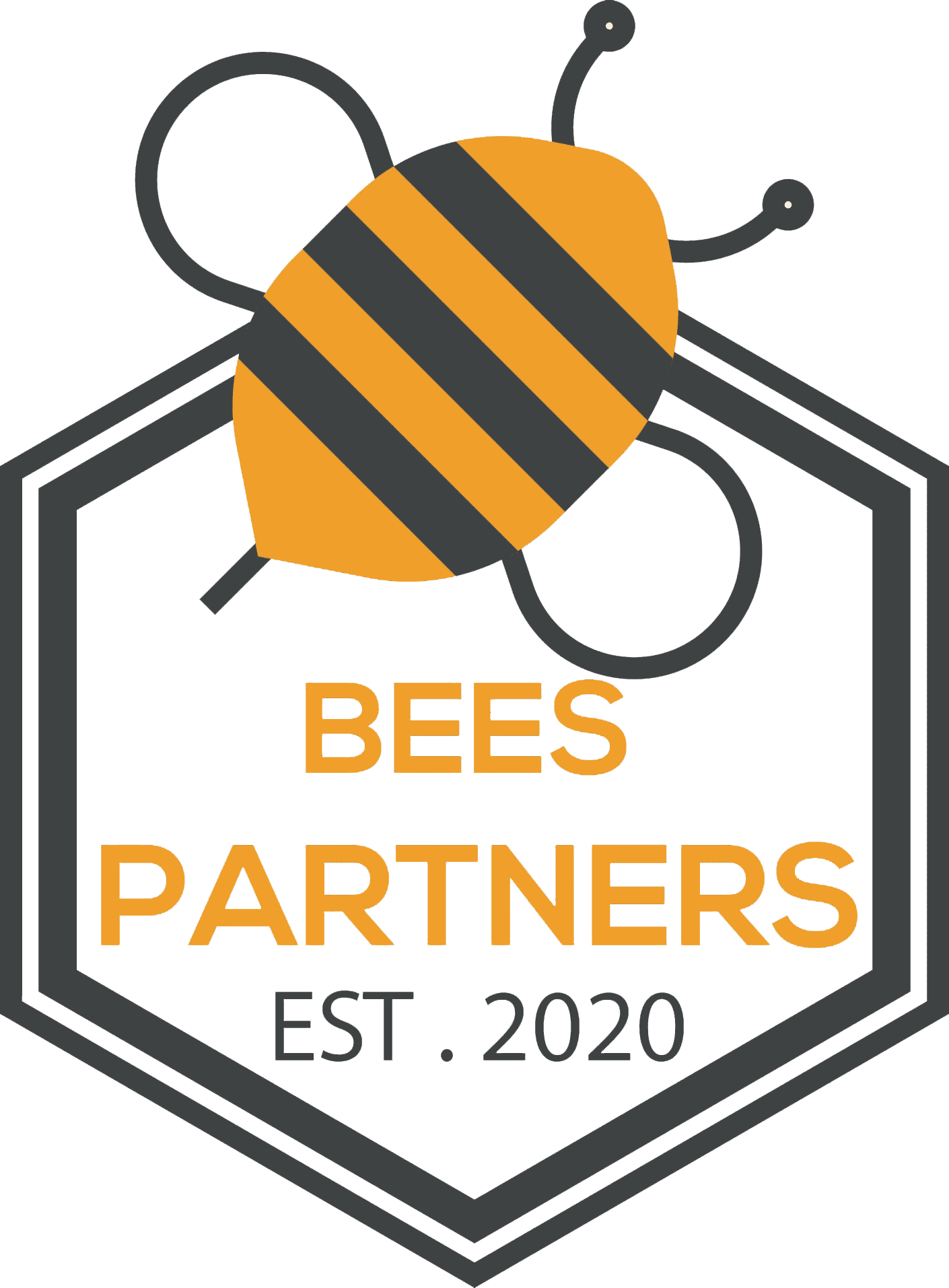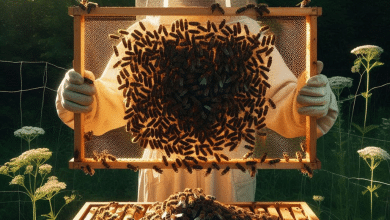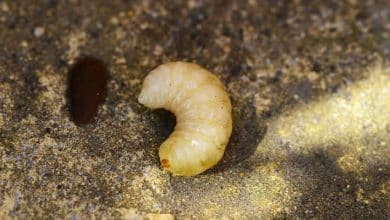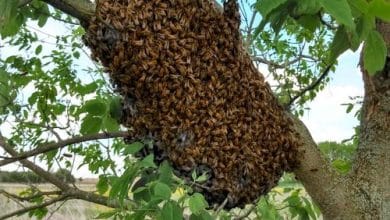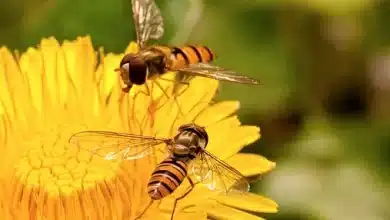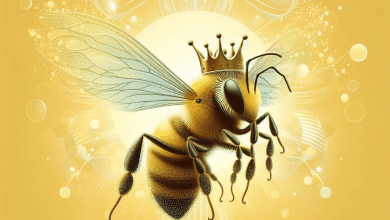do queen bees ever leave the hive
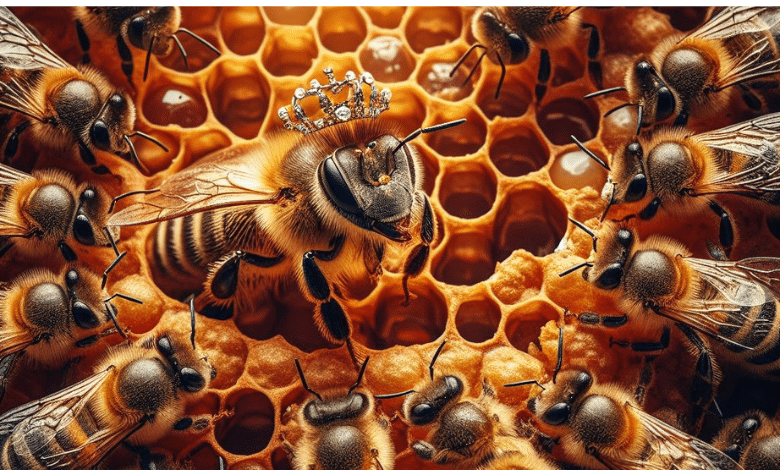
Queen bees are fascinating creatures that play a crucial role in the functioning of a beehive. They are the mother and leader of the hive, responsible for laying eggs and ensuring the survival of the colony. While worker bees and drones are known to venture out of the hive in search of food and mates, the question remains – do queen bees ever leave the hive?
This article aims to explore the behavior and habits of queen bees regarding leaving the hive. Understanding this aspect is important for beekeepers and researchers as it sheds light on the reproductive cycle and dynamics within a hive.
Queen bees have a distinct life cycle, starting from an egg and developing into an adult. During their development, they remain confined within the hive until they reach maturity. Once they become adult queens, they embark on a mating flight to mate with drones from other colonies.
However, there are instances where queen bees temporarily leave the hive. This can occur during swarming, a natural process in which a portion of the hive splits off to form a new colony. During swarming, new queens emerge and take flight along with a portion of the worker bees.
In some cases, queen bees may permanently leave the hive due to circumstances such as supersedure or replacement by a new queen. This can occur if the existing queen is weak or no longer able to fulfill her duties.
In conclusion, while queen bees primarily spend their lives within the hive, there are instances where they leave temporarily or permanently. Understanding their behavior and habits surrounding leaving the hive is vital for maintaining healthy colonies and furthering research in beekeeping.
Background information on Queen Bees and their role in a beehive
Queen bees are the central figures in a bee colony, playing a vital role in its functioning and survival. They are the only sexually mature females in the hive and are responsible for laying eggs, ensuring the production of worker bees, and maintaining the population of the hive.
The queen bee is larger in size compared to the worker bees and is easily recognizable by her elongated abdomen. She is fed a special diet of royal jelly and honey, which allows her to develop into a fully mature and fertile adult. Once she reaches maturity, which usually takes about 14 days, she starts laying eggs.
The queen bee’s primary role is to lay eggs. She can lay up to 2,000 eggs per day during the peak season, maintaining the population and productivity of the hive. The eggs she lays develop into worker bees, which perform various tasks within the hive, including collecting nectar, guarding the entrance, and nursing the developing larvae.
In addition to egg-laying, the queen bee also emits pheromones that regulate the behavior of the worker bees and maintain the social structure of the hive. These pheromones keep the workers loyal to the queen and stimulate their productivity. The absence or decline in pheromone production by the queen can trigger the workers to initiate the replacement of the queen.
Overall, queen bees are crucial to the survival and functioning of the hive. They play a central role in reproduction, population maintenance, and the social structure of the colony. Understanding their behavior and role is essential for beekeepers to ensure the health and productivity of their hives.
Importance of understanding whether Queen Bees ever leave the hive
Understanding whether Queen Bees ever leave the hive is of utmost importance for beekeepers and researchers alike. By gaining knowledge about the behavior and habits of Queen Bees, beekeepers can ensure the health, productivity, and longevity of their hives. This understanding allows them to take appropriate measures to maintain a stable queen population and prevent any potential disruptions in the colony.
One of the key reasons for understanding whether Queen Bees leave the hive is to manage swarming behavior. Swarming is a natural reproductive process of bees, where a portion of the colony, including the old queen, leaves the hive to form a new colony. By closely observing the behavior of the queen and monitoring the hive conditions, beekeepers can anticipate and control swarming, which may have a detrimental impact on honey production and hive population.
Furthermore, understanding the circumstances under which Queen Bees may permanently leave the hive is essential for ensuring the overall survival of the colony. Beekeepers need to recognize signs of supersedure or replacement of an existing queen, as this may indicate an issue within the hive, such as disease or failing queen health. By promptly identifying and addressing such situations, beekeepers can intervene to prevent the collapse of the colony.
Research on Queen Bee behavior is also crucial for broader scientific knowledge and conservation efforts. Studying the factors influencing the timing and frequency of Queen Bee mating flights can provide insights into bee genetics, reproductive strategies, and potential threats to their populations.
In conclusion, understanding whether Queen Bees ever leave the hive is vital for beekeepers to manage their hives effectively and maintain a healthy and productive colony. It also contributes to scientific understanding and conservation efforts, ensuring the long-term survival of these essential pollinators.
Queen Bee Life Cycle
The life cycle of a Queen Bee is a fascinating process that begins with the development of a queen cup, a specialized cell where the queen bee is nurtured. The development of the queen begins with the laying of an egg by the reigning queen bee. This egg is placed in a vertically hanging cell, also known as a queen cup.
Once the egg is laid, it goes through a process of incubation and hatches into a larva. The larva is fed a special diet of royal jelly, which is secreted by worker bees. This diet is crucial for the queen bee’s growth and development. The larva is constantly cared for by worker bees, ensuring its nourishment and protection.
After a few days, the larva pupates and undergoes metamorphosis inside its cell. During this phase, the larva transforms into an adult queen bee. Once fully developed, the newly emerged queen bee mates with several male drones to ensure genetic diversity within the colony.
After mating, the queen bee becomes capable of laying eggs. From this moment on, her primary role is to lay eggs and maintain the growth and stability of the colony. Unlike worker bees, the queen bee does not leave the hive again, dedicating the rest of her life to egg-laying.
The queen bee’s ability to lay eggs is essential for the colony’s survival. Without a queen, the hive will eventually fail, and the bees will disperse. Thus, understanding and managing the queen bee’s life cycle is of utmost importance for beekeepers to ensure the productivity and longevity of their hives.
Overview of the life cycle stages of a Queen Bee
The life cycle of a Queen Bee consists of distinct stages that culminate in her emergence as a mature and fertile queen. This process is essential for the survival and productivity of the hive.
It all begins with the laying of an egg by the reigning queen bee. This egg is carefully placed in a specialized vertical cell known as a queen cup. Once the egg is laid, it undergoes an incubation period, after which it hatches into a larva.
During the larval stage, the future queen bee is fed a diet rich in royal jelly, a substance secreted by worker bees. This special diet is crucial for the queen bee’s growth and development. The larva is constantly tended to by worker bees who ensure its nourishment and protection.
After a few days, the larva enters the pupal stage, where it undergoes metamorphosis. Inside the cell, the larva undergoes dramatic changes, eventually transforming into an adult queen bee.
Once fully developed, the young queen bee emerges from her cell. At this point, she goes on a mating flight, during which she mates with several male drones to ensure genetic diversity within the colony.
After mating, the queen bee becomes capable of laying eggs. Her primary role is now to lay eggs and maintain the growth and stability of the colony. Unlike worker bees, who leave the hive to forage for nectar and pollen, the queen bee remains inside the hive for the rest of her life, focused on egg-laying.
Understanding the various stages of the queen bee’s life cycle is crucial for beekeepers to effectively manage their hives and ensure the production and longevity of their colonies.
Egg-laying process and development into an adult Queen Bee
The egg-laying process and development into an adult Queen Bee is a crucial phase in the life cycle of a queen. After emerging from her cell as a fully-developed queen bee, her primary role is to lay eggs and ensure the growth and stability of the colony.
The queen bee begins her egg-laying process by searching for suitable cells within the hive. These cells are called brood cells, which have been cleaned and prepared by worker bees. Once she finds a suitable cell, the queen carefully positions herself over it and lays a single egg into the cell.
The eggs laid by the queen bee are small, oval-shaped, and attached to the bottom of the cell. They are about the size of a grain of rice and are white in color. During her peak egg-laying phase, a queen bee is capable of laying up to 2,000 eggs per day.
The eggs undergo an incubation period, during which they are cared for by worker bees. They provide the necessary warmth and protection to ensure the eggs develop into larvae. After a few days, the eggs hatch into larvae, which are fed a special diet known as royal jelly. This nutrient-rich substance is secreted by worker bees and is crucial for the growth and development of the future queen bee.
The larval stage is a crucial period for the queen bee’s development. She is constantly attended to by worker bees who ensure her nourishment and protection. The workers feed her a continuous supply of royal jelly, which promotes rapid growth and development.
As the larvae continue to grow, they undergo several molting stages before entering the pupal stage. During the pupal stage, the larvae undergo metamorphosis, transforming into adult queen bees. This stage is marked by dramatic physical changes, including the development of wings and reproductive organs.
After completing the pupal stage, the fully-developed queen bee emerges from her cell. She is now ready to embark on her mating flight and fulfill her role as the reproductive powerhouse of the colony.
Queen Bee Mating Flight
Queen Bee Mating Flight is a significant event in the life cycle of a queen bee. The purpose of this flight is for the queen to mate with multiple drones and collect their sperm to store in a special organ called a spermatheca. This ensures genetic diversity within the colony and enables the queen to lay fertilized eggs throughout her lifetime.
During the mating flight, the queen bee leaves the hive and embarks on a journey in search of suitable drone congregating areas known as drone zones. These areas are typically located a few miles away from the hive and are characterized by the presence of drones from different colonies. The queen bee emits specific pheromones that attract drones from neighboring hives to mate with her.
The mating flight typically lasts for 1 to 5 days, with an average duration of 2.2 days. During this time, the queen mates with approximately 10 to 12 drones. Each mating session lasts only a few seconds, during which the drone deposits its sperm into the queen’s reproductive tract.
Once the queen has mated with enough drones, she returns to the hive to assume her royal role as a mated queen. It takes a few days for her to start laying eggs, during which her abdomen grows larger, making flight clumsy and difficult. After this period, the queen bee no longer engages in mating flights and stays exclusively inside the hive to lay eggs and maintain the colony’s population.
Understanding the timing and frequency of queen bee mating flights is essential for beekeepers and researchers. It allows them to monitor the health and reproductive potential of the queen and evaluate the genetic diversity of the colony. By observing and studying queen bee mating behavior, bee enthusiasts can better manage their hives and ensure the long-term success of their colonies.
Explanation of Queen Bee mating flight and its purpose
During a specific period in her life, a queen bee engages in a crucial event known as the mating flight. This flight serves the purpose of allowing the queen to mate with multiple drones and collect their sperm for future egg fertilization. The mating flight is a significant milestone in the queen’s life as it ensures genetic diversity within the colony and enables her to lay fertilized eggs throughout her lifetime.
The queen bee departs from the hive and embarks on a journey to find suitable drone congregating areas called drone zones. These areas, located a few miles away from the hive, are characterized by the presence of drones from different colonies. The queen emits pheromones that attract drones from neighboring hives, enticing them to mate with her.
The mating flight typically lasts for 1 to 5 days, with an average duration of 2.2 days. During this time, the queen mates with approximately 10 to 12 drones. Each mating session is fleeting, lasting only a few seconds, during which the drone deposits its sperm into the queen’s reproductive tract.
Once the queen has mated with a sufficient number of drones, she returns to the hive to assume her role as a mated queen. It takes a few days for her to start laying eggs. During this time, her abdomen grows larger, making flight clumsy and difficult. After this period, the queen no longer engages in mating flights and stays exclusively inside the hive to lay eggs and maintain the colony’s population.
Understanding the timing and frequency of queen bee mating flights is essential for beekeepers and researchers. It allows them to assess the health and reproductive potential of the queen and evaluate the genetic diversity of the colony. By studying queen bee mating behavior, bee enthusiasts can more effectively manage their hives and ensure the long-term success of their colonies.
Factors influencing the timing and frequency of Queen Bee mating flights
There are several factors that influence the timing and frequency of Queen Bee mating flights. One major factor is the age of the queen. Young queens typically have a higher propensity to go on mating flights compared to older queens. This is because young queens have a greater need to mate and establish a strong genetic foundation for the colony.
Environmental conditions also play a crucial role in determining when and how often a queen bee will go on mating flights. Temperature and weather conditions need to be favorable for successful mating. Queens are more likely to go on mating flights during warm, sunny days when the weather is calm and wind-free. Unfavorable weather such as rain, extreme temperatures, or strong winds can delay or prevent mating flights altogether.
The availability of drones is another important factor. Drones are male bees responsible for mating with the queen. The presence of a sufficient number of drones in the vicinity greatly increases the chances of a successful mating flight. Lack of drones or low drone density in the area can cause delays in mating flights.
The overall health and condition of the queen also affect the timing and frequency of mating flights. A healthy queen with a well-developed reproductive system is more likely to go on frequent mating flights compared to a queen with reproductive issues or physical limitations.
Additionally, factors such as hive population and queen pheromones can influence the timing and frequency of queen mating flights, although further research is needed to fully understand their impact.
Understanding these factors is crucial for beekeepers as it allows them to optimize conditions for successful mating flights, ensure genetic diversity within the colony, and maintain the overall health and productivity of their beehives.
Temporary Absences from the Hive
Instances where Queen Bees temporarily leave the hive can occur for various reasons. One common scenario is during the process of swarming. Swarming is a natural reproductive behavior of honey bees where the colony splits into two or more groups. Before swarming, the queen and a large portion of the worker bees leave the hive in search of a new location to establish a separate colony. This temporary absence of the queen from the original hive is a fundamental part of the swarming process.
Another instance where queen bees may temporarily leave the hive is during mating flights. Mating flights are essential for the queen to mate with a sufficient number of drones and ensure genetic diversity within the colony. During these flights, the queen ventures out of the hive and flies to areas where drones are present. Once she has successfully mated, she returns to the hive and begins her duties as the egg-laying queen.
These temporary absences from the hive are vital for the overall survival and reproduction of the honey bee colony. They allow for the expansion of the colony through swarming and ensure genetic diversity through mating. However, it’s crucial to note that these absences are temporary, and the queen always returns to the hive to continue her role in leading and maintaining the colony.
Understanding the behavior of queen bees and their temporary absences from the hive is crucial for beekeepers. It allows them to anticipate swarming events and take necessary measures to prevent or manage them effectively. Additionally, it helps in monitoring the health and reproductive success of the queen and overall colony dynamics. By studying and comprehending these behaviors, beekeepers can ensure the wellbeing and productivity of their beehives.
Instances where Queen Bees temporarily leave the hive
Queen Bees may temporarily leave the hive in two specific instances – during swarming and mating flights. Swarming is a natural behavior wherein the colony splits into two or more groups. Before swarming, the queen and a significant number of worker bees venture out of the hive in search of a new location to establish a separate colony. This temporary absence of the queen from the original hive is an integral part of the swarming process.
Another occurrence that leads to the temporary absence of the queen is during mating flights. These flights are crucial for the queen to mate with a sufficient number of drones and ensure genetic diversity within the colony. During these flights, the queen leaves the hive and flies to areas where drones are present. Once she has successfully mated, she returns to the hive and begins her duties as the egg-laying queen.
Understanding these temporary absences from the hive is essential for beekeepers. Anticipating swarming events can help them take necessary measures to prevent or manage them effectively. Additionally, monitoring the health and reproductive success of the queen is crucial for maintaining overall colony dynamics. By studying and comprehending these behaviors, beekeepers can ensure the wellbeing and productivity of their beehives.
Swarming behavior and emergence of new queens
Swarming is a natural behavior that occurs within a honeybee colony when the population becomes too large for the existing hive to sustain. This process involves the emergence of new queens, who will eventually lead separate colonies. Swarming is a complex phenomenon that requires careful coordination among the bees.
When a colony prepares to swarm, worker bees create special cells called queen cups. These queen cups serve as potential homes for new queens. The worker bees then select a few larvae and feed them royal jelly, a nutrient-rich substance that triggers queen development. The competition among these larvae determines which one will eventually become the new queen.
Once a new queen emerges from her cell, she undergoes a period of maturing and orientation within the hive. During this time, she is known as a virgin queen. Meanwhile, the old queen and a significant number of worker bees leave the hive in search of a suitable location for a new colony. This group of bees is called the primary swarm.
The primary swarm settles on a temporary location, often a tree branch or shrub, while scout bees search for a suitable permanent location for the new colony. Once a suitable site is found, the bees will then relocate to their new home.
It’s important to note that swarming is not always a smooth process. Sometimes, a second swarm, known as an after swarm, occurs when a newly emerged queen decides to leave with another group of bees. This can result in multiple swarms from a single colony.
Understanding swarming behavior and the emergence of new queens is crucial for beekeepers. By monitoring the colony and recognizing the signs of swarming, beekeepers can take necessary measures to prevent the loss of bees or manage the swarming process effectively. This knowledge also contributes to our understanding of the complex social dynamics within bee colonies and aids in the conservation and management of these important pollinators.
Permanent Departure from the Hive
There are certain circumstances in which Queen Bees permanently leave the hive. One common scenario is during supersedure, a process in which the colony determines that the current queen is no longer effective or healthy. The worker bees will then begin to rear a new queen to replace her.
Supersedure can occur for various reasons, such as old age, disease, or poor performance by the queen. When the workers sense that the queen’s ability to lay eggs or maintain the well-being of the colony is compromised, they take action to replace her. This involves building new queen cells and feeding selected larvae with royal jelly to create new queens.
Once a new queen emerges and matures, she will undertake a mating flight to mate with drones from other colonies. After mating, the new queen will return to the hive and eliminate any remaining rival queens to assert her dominance. The old queen, sensing the presence of a new queen, will depart from the hive, either by flying away or by being escorted out by worker bees.
In some cases, beekeepers may intentionally replace a queen to improve the genetics of the colony or to address certain issues, such as aggressive behavior. This process involves introducing a new queen to the hive and allowing the bees to gradually accept her as the new leader.
Understanding the circumstances in which queen bees permanently leave the hive is essential for beekeepers to effectively manage their colonies. Proper queen management ensures the health and productivity of the hive, allowing for optimal honey production and pollination services.
Circumstances in which Queen Bees permanently leave the hive
Queen Bees may permanently leave the hive under certain circumstances. One common scenario is during a process called supersedure, which occurs when the colony determines that the current queen is no longer effective or healthy. This can happen due to old age, disease, or poor performance by the queen. When the worker bees sense that the queen’s ability to lay eggs or maintain the well-being of the colony is compromised, they take action to replace her.
The workers will begin by building new queen cells and select larvae to be fed with royal jelly, creating new queens. Once a new queen emerges and matures, she will undertake a mating flight to mate with drones from other colonies. After mating, the new queen will return to the hive and eliminate any remaining rival queens to assert her dominance.
The old queen, realizing the presence of a new queen, will usually depart from the hive. This departure can occur through flying away or being escorted out by worker bees. The workers will ensure that only the new queen remains in the hive, allowing her to take charge and continue laying eggs to sustain the colony.
Beekeepers may also intentionally replace a queen to address certain issues within the colony, such as aggressive behavior or to improve the genetics of the colony. This process involves introducing a new queen to the hive and allowing the bees to gradually accept her as the new leader.
Understanding the circumstances in which queen bees permanently leave the hive is crucial for effective queen management and overall hive health. Beekeepers need to be aware of the signs of a failing queen and take appropriate actions to ensure the well-being and productivity of their colonies.
Supersedure and replacement of an existing queen
Supersedure is a natural process in which honeybees raise new queens to replace the existing queen in the hive. This occurs when the colony senses that the current queen is no longer effective or healthy. Factors such as age, disease, or poor performance can trigger the need for supersedure. It is a way for the colony to ensure the continuity and productivity of the hive.
During supersedure, the worker bees build special queen cells to raise new queens. They select larvae to be fed with royal jelly, which allows them to develop into queens. Once the new queens emerge and mature, they take a mating flight to mate with drones from other colonies. This mating flight is crucial for ensuring genetic diversity within the colony.
After mating, the new queen returns to the hive and eliminates any remaining rival queens. This establishes her dominance and ensures that she is the sole queen of the colony. The old queen, realizing the presence of the new queen, may permanently leave the hive. This departure can occur through flying away or being escorted out by worker bees.
Beekeepers may also intentionally replace a queen to address certain issues within the colony. For example, if the colony exhibits aggressive behavior or if the genetics of the queen are not desirable, a beekeeper may introduce a new queen to improve the colony’s traits.
Understanding the process of supersedure and replacement of an existing queen is essential for proper queen management in beekeeping. Recognizing the signs that a queen may need to be replaced and taking timely action can help maintain the health and productivity of the hive. By ensuring a strong and capable queen, beekeepers can support the overall success of their colonies.
Conclusion
In conclusion, queen bees do not typically leave the hive except for specific circumstances. After completing their initial mating flights, queen bees return to the hive and remain inside for the duration of their lives. They engage in the important task of egg-laying, ensuring the growth and productivity of the colony.
However, there are instances where queen bees may temporarily leave the hive. This can occur during swarming behavior, when a portion of the colony, including the queen, departs to establish a new hive. Additionally, new queens can emerge within the hive during supersedure, leading to the departure of the old queen.
Understanding the behavior of queen bees in relation to leaving the hive is crucial for beekeepers and researchers alike. By studying their life cycle and mating flights, beekeepers can better manage and care for their colonies. Recognizing the signs of swarming or supersedure can allow beekeepers to take appropriate action to prevent loss or manage the formation of new colonies.
Researchers can also gain valuable insights into the biology and behavior of queen bees by observing their habits within the hive. This knowledge can contribute to the overall understanding of honeybee biology and aid in the development of sustainable beekeeping practices.
In conclusion, studying and understanding the behavior of queen bees in relation to leaving the hive is essential for maintaining healthy colonies and furthering our knowledge of these fascinating insects.
Summary of the behavior and habits of Queen Bees regarding leaving the hive
Queen bees, for the most part, do not typically leave the hive except for specific circumstances. After completing their initial mating flights, queen bees return to the hive and remain inside for the duration of their lives. They engage in the important task of egg-laying, ensuring the growth and productivity of the colony.
However, there are instances where queen bees may temporarily leave the hive. This can occur during swarming behavior when a portion of the colony, including the queen, departs to establish a new hive. Additionally, new queens can emerge within the hive during supersedure, leading to the departure of the old queen.
It is important to understand the behavior of queen bees in relation to leaving the hive to effectively manage and care for the colonies. Beekeepers can recognize the signs of swarming or supersedure and take appropriate action to prevent loss or manage the formation of new colonies.
Researchers can gain valuable insights into the biology and behavior of queen bees by observing their habits within the hive. This knowledge contributes to the overall understanding of honeybee biology and aids in the development of sustainable beekeeping practices.
In conclusion, studying and understanding the behavior of queen bees in relation to leaving the hive is essential for maintaining healthy colonies and furthering our knowledge of these fascinating insects. By recognizing their patterns and behaviors, we can ensure the successful reproduction and growth of honeybee populations.
Importance of studying and understanding Queen Bee behavior for beekeepers and researchers
Studying and understanding the behavior of Queen Bees is of utmost importance for both beekeepers and researchers. By gaining insights into the habits and patterns of these crucial insects, beekeepers can effectively manage and care for their colonies, ensuring their health and productivity.
For beekeepers, knowledge of Queen Bee behavior enables them to identify signs of swarming or supersedure, allowing them to take appropriate action to prevent loss or manage the formation of new colonies. Understanding the timing and frequency of Queen Bee mating flights helps beekeepers optimize their hive management practices, ensuring the successful reproduction and growth of their colonies. By observing Queen Bees within the hive, beekeepers can also assess the health and vitality of the colony, ensuring the presence of a strong and productive queen.
Researchers also benefit significantly from studying Queen Bee behavior. By conducting detailed observations and analysis of Queen Bees, researchers gain valuable insights into honeybee biology and behavior. This knowledge contributes to the overall understanding of honeybee populations, which is vital for the development of sustainable beekeeping practices and conservation efforts. Researchers can also contribute to the breeding and selection of genetically superior queens, leading to more resilient and productive honeybee populations.
In conclusion, the study and understanding of Queen Bee behavior is essential for maintaining healthy colonies, furthering our knowledge of these fascinating insects, and ensuring the long-term sustainability of beekeeping practices. By investing in research and education focused on Queen Bees, beekeepers and researchers can contribute to the preservation of honeybee populations and the important ecosystem services they provide.
And there you have the life journey of a Queen bees, which is both fascinating and critical to the survival of the bee colony. Understanding the unique role of the queen not only gives us insight into bee behavior but also underscores the importance of every member within a hive. As she takes her nuptial flights early on and then dedicates her life to laying the foundation of generations to come, the Queen bees is both a traveler and a tireless provider for her hive. If you’ve found this dive into the life of a queen bee intriguing, share your thoughts with us. Have you witnessed a swarm or are you perhaps a beekeeper with stories of your own? We’re buzzing with curiosity to hear your experiences and any questions you might have about the Queen bees and her extraordinary life.
